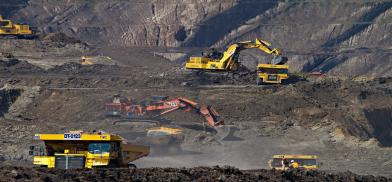Nepal’s self-sufficiency in cement, with a little Chinese help, costs the environment and people
Nepal has become self-sufficient in cement production, with close to 55 plants having an annual production capacity of 15 million tonnes operating across the country

Nepal has become self-sufficient in cement production, with close to 55 plants having an annual production capacity of 15 million tonnes operating across the country. The sector will continue to grow in the near future amid increasing demand projections, but this growth has come at a cost to the environment and government revenues.
Cement factories are extracting close to 11.2 million tonnes of limestones from 46 quarries across the country, often giving little regard to the impact on local communities and other natural resources like air and groundwater, according to a report in The Nepali Times.
Local bodies aren’t enough to take on big contractors and companies which prefer to share a portion of their profits with local strongmen and politicians. And, in the country’s three-tier governance system, local bodies are also heavily reliant on these industries for their revenues.
This dependence makes them reluctant to take coercive actions, fearing losing these plants and factories from their areas.
Mega projects of national importance, reconstruction efforts that followed the disastrous earthquake of 2015, and the abundance of limestone, have fueled the growth of the cement industry, bringing joint ventures and foreign direct investments from foreign companies. As a result, two of the country’s largest producers are joint ventures by Chinese firms, Hongshi and Huaxin, with their respective local partners.
In 2019, Huaxin Cement Narayani Pvt Ltd was found violating several rules in harming the local environment. The company was mining sand and stones by digging up to six meters in a river there and using the materials to build the access road that passed through forest owned by local bodies.
A subcommittee of the Public Account Committee (PAC) of parliament also found flaws in the companies model of sharing revenue with local authorities.
Furthermore, as cement companies kept growing, profiting millions from trade, the government, on the other hand, receives little in revenue. Of the total $1.2 billion annual turnovers, the government receives just $22 million in revenues.
On one hand, the industry helps the government to reduce dependence on imports and create much-needed jobs, it is also bringing greater risks of landslides, air and soil pollution due to weak implementation of regulations.
An estimate by the Nepal Rastra Bank, the country’s central bank, the domestic demand of cement is projected to touch 26 million tonnes annually by 2023-24. As the industry is all set to grow further, Nepal, already prone to natural disasters, will need to find a balance and better regulations to protect the environment.
(SAM)








Post a Comment